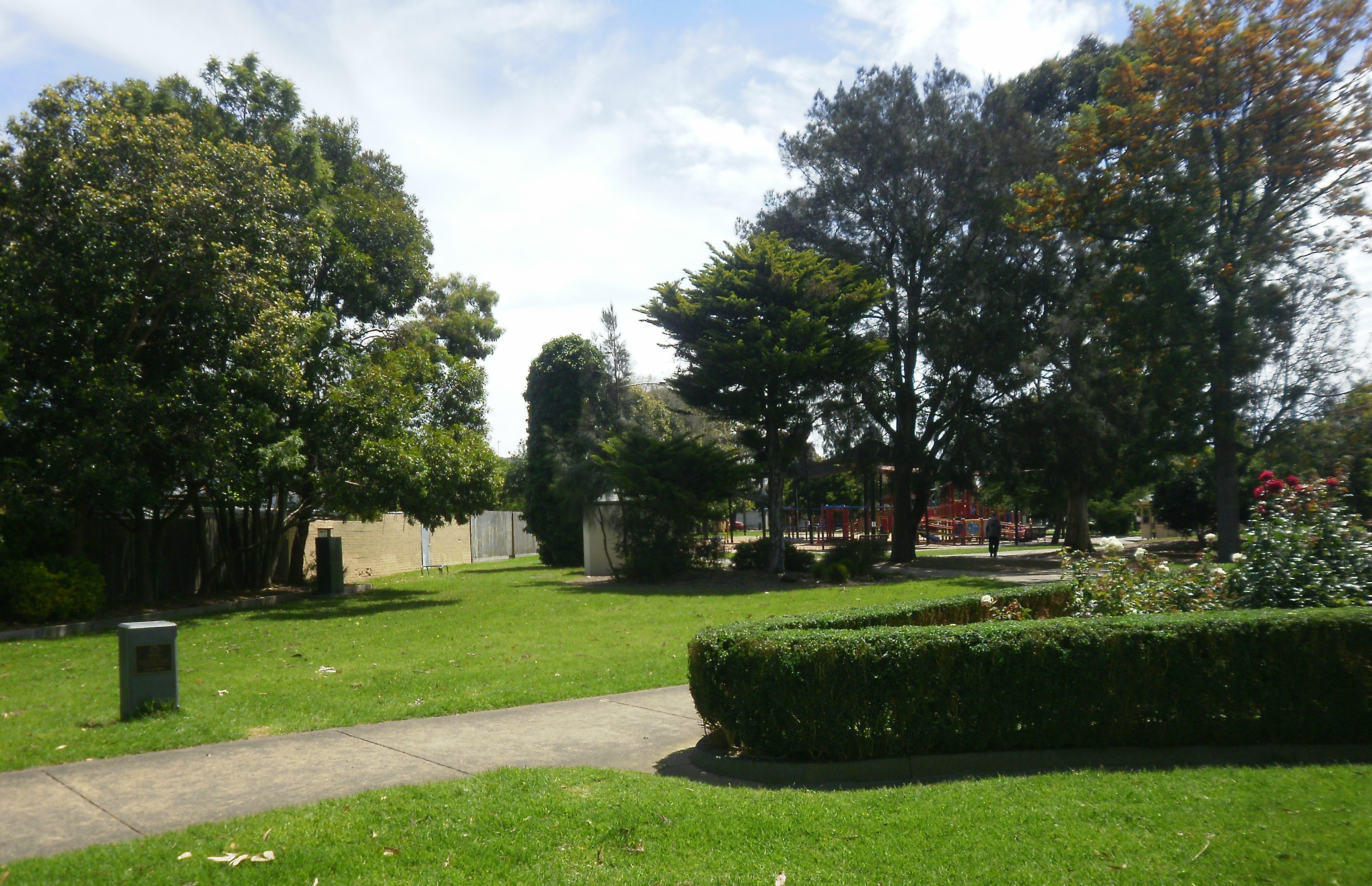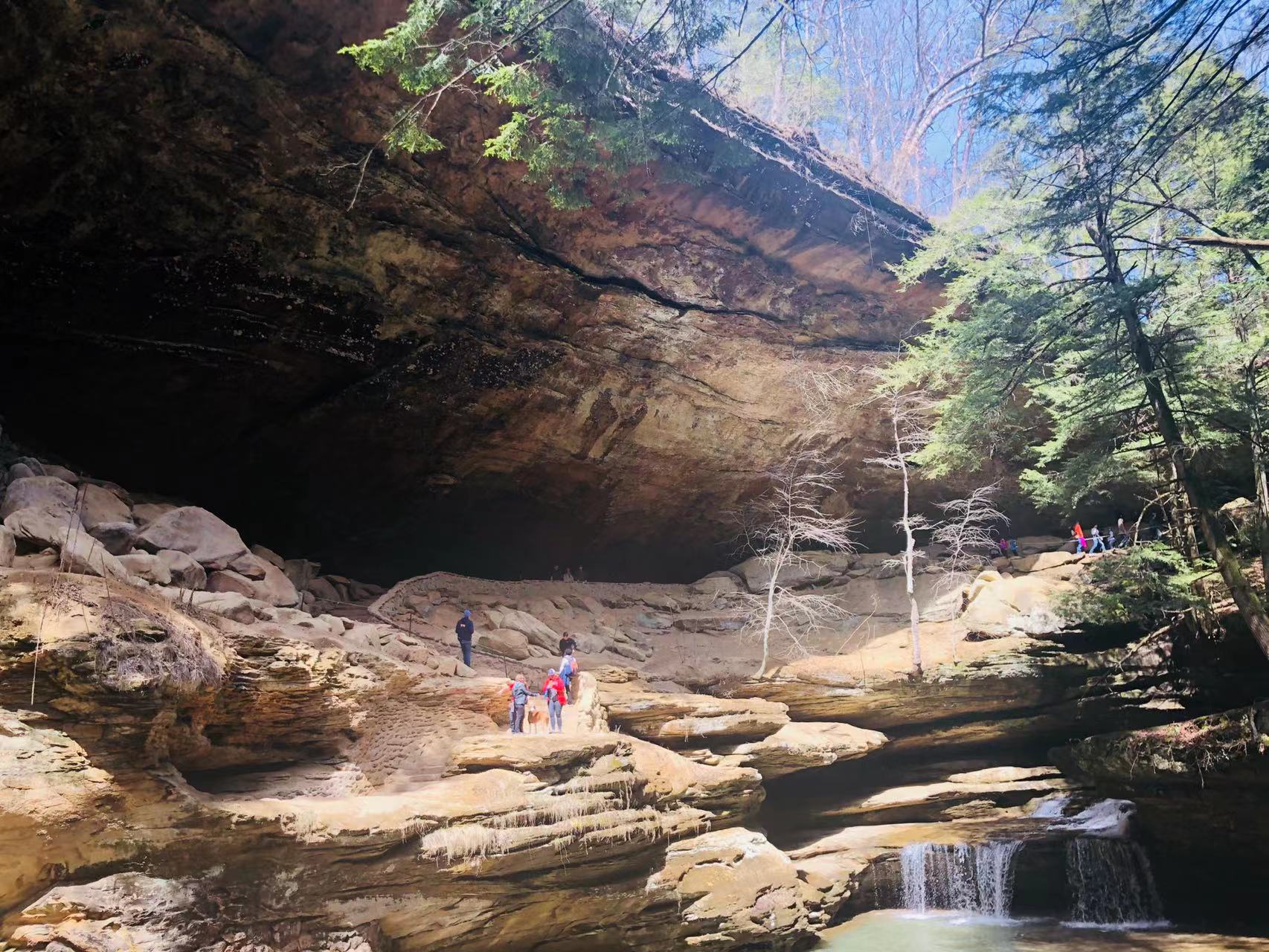|
Onaway State Park
Onaway State Park is a public recreation area covering on the southeast shore of Black Lake in North Allis Township, Presque Isle County, Michigan. The state parks sits at the end of M-211 five miles north of Onaway. It contains sand and cobblestone beaches, large rock outcroppings, a campground, and nature trail highlighting a diversity of trees. The park was added to the National Register of Historic Places in 2009. History Dedicated in 1921, Onaway was one of 13 parks established in 1920 after the Michigan State Park Commission was created to acquire lands for state parks in 1919. In 1920, Presque Isle County deeded 150 acres of land to the state for this purpose. The acreage included a city park then known as "The Indian Orchard" and some surrounding private lands. In 1921, the state began developing the park, adding two small bathhouses and toilet facilities to the picnic pavilion already in place. The two existing farmhouses were remodeled for use as a park store and ... [...More Info...] [...Related Items...] OR: [Wikipedia] [Google] [Baidu] |
North Allis Township, Michigan
North Allis Township is a civil township of Presque Isle County in the U.S. state of Michigan. The population was 618 at the 2000 census. Geography According to the United States Census Bureau, the township has a total area of , of which is land and (4.67%) is water. Allis Township is adjacent to the south. Demographics As of the census of 2000, there were 618 people, 258 households, and 175 families residing in the township. The population density was 18.9 per square mile (7.3/km). There were 423 housing units at an average density of 12.9 per square mile (5.0/km). The racial makeup of the township was 96.44% White, 1.13% African American, and 2.43% from two or more races. Hispanic or Latino of any race were 1.62% of the population. There were 258 households, out of which 27.5% had children under the age of 18 living with them, 57.4% were married couples living together, 7.4% had a female householder with no husband present, and 31.8% were non-families. 27.1% of all hou ... [...More Info...] [...Related Items...] OR: [Wikipedia] [Google] [Baidu] |
M-211
M-211 is a state trunkline highway in the Lower Peninsula (LP) of Michigan that connects the community of Onaway with Onaway State Park. The highway runs through farmland and forests along the route to the park. The trunkline was originally designated M-95 from 1919 until 1934. In that year, the designation was moved to a different highway in the Upper Peninsula (UP), and the state park connector was given the current number. The highway was last changed by 1960 when paving was completed. Route description M-211 is a two-lane highway that starts at M-68 in downtown Onaway. The trunkline runs north out of town on Main Street past business and residences. It crosses the North Eastern State Trail and passes the Leo E. Getz County Airport north of town. M-211 enters an area of farmland north of the airport. As it continues north and approaches Onaway State Park, the terrain transitions to forest land. M-211 ends at the intersection with Bonz Beach Highway in front of the state ... [...More Info...] [...Related Items...] OR: [Wikipedia] [Google] [Baidu] |
Protected Areas Established In 1920
Protection is any measure taken to guard a thing against damage caused by outside forces. Protection can be provided to physical objects, including organisms, to systems, and to intangible things like civil and political rights. Although the mechanisms for providing protection vary widely, the basic meaning of the term remains the same. This is illustrated by an explanation found in a manual on electrical wiring: Some kind of protection is a characteristic of all life, as living things have evolved at least some protective mechanisms to counter damaging environmental phenomena, such as ultraviolet light. Biological membranes such as bark on trees and skin on animals offer protection from various threats, with skin playing a key role in protecting organisms against pathogens and excessive water loss. Additional structures like scales and hair offer further protection from the elements and from predators, with some animals having features such as spines or camouflage serv ... [...More Info...] [...Related Items...] OR: [Wikipedia] [Google] [Baidu] |
National Register Of Historic Places In Presque Isle County, Michigan
This is a list of properties on the National Register of Historic Places in the U.S. state of Michigan. __NOTOC__ Current listings by county Alcona County Alger County Allegan County Alpena County Antrim County Arenac County Baraga County Barry County Bay County Benzie County Listings Formerly Located in Benzie County The following listing was located in Benzie County at the time it was placed on the Register, but has since moved to Manistee County. Berrien County Branch County Calhoun County Cass County Charlevoix County Cheboygan County Chippewa County Clare County Clinton County Crawford County Delta County Dickinson County Eaton County Emmet County Genesee County Gladwin County There are no sites listed on the National Register of Historic Places in Gladwin County. Gogebic County Grand Traverse County Gratiot County ... [...More Info...] [...Related Items...] OR: [Wikipedia] [Google] [Baidu] |
Protected Areas Of Presque Isle County, Michigan
Protection is any measure taken to guard a thing against damage caused by outside forces. Protection can be provided to physical objects, including organisms, to systems, and to intangible things like civil and political rights. Although the mechanisms for providing protection vary widely, the basic meaning of the term remains the same. This is illustrated by an explanation found in a manual on electrical wiring: Some kind of protection is a characteristic of all life, as living things have evolved at least some protective mechanisms to counter damaging environmental phenomena, such as ultraviolet light. Biological membranes such as bark on trees and skin on animals offer protection from various threats, with skin playing a key role in protecting organisms against pathogens and excessive water loss. Additional structures like scales and hair offer further protection from the elements and from predators, with some animals having features such as spines or camouflage servin ... [...More Info...] [...Related Items...] OR: [Wikipedia] [Google] [Baidu] |
Civilian Conservation Corps In Michigan
Civilians under international humanitarian law are "persons who are not members of the armed forces" and they are not "combatants if they carry arms openly and respect the laws and customs of war". It is slightly different from a non-combatant, because some non-combatants are not civilians (for example, military chaplains who are attached to the belligerent party or military personnel who are serving with a neutral country). Civilians in the territories of a party to an armed conflict are entitled to certain privileges under the customary laws of war and international treaties such as the Fourth Geneva Convention. The privileges that they enjoy under international law depends on whether the conflict is an internal one (a civil war) or an international one. In some nations, uniformed members of civilian police or fire departments colloquially refer to members of the public as civilians. Etymology The word "civilian" goes back to the late 14th century and is from Old French ''civ ... [...More Info...] [...Related Items...] OR: [Wikipedia] [Google] [Baidu] |
Parks On The National Register Of Historic Places In Michigan
A park is an area of natural, semi-natural or planted space set aside for human enjoyment and recreation or for the protection of wildlife or natural habitats. Urban parks are green spaces set aside for recreation inside towns and cities. National parks and country parks are green spaces used for recreation in the countryside. State parks and provincial parks are administered by sub-national government states and agencies. Parks may consist of grassy areas, rocks, soil and trees, but may also contain buildings and other artifacts such as monuments, fountains or playground structures. Many parks have fields for playing sports such as baseball and football, and paved areas for games such as basketball. Many parks have trails for walking, biking and other activities. Some parks are built adjacent to bodies of water or watercourses and may comprise a beach or boat dock area. Urban parks often have benches for sitting and may contain picnic tables and barbecue grills. The larg ... [...More Info...] [...Related Items...] OR: [Wikipedia] [Google] [Baidu] |
State Parks Of Michigan
State may refer to: Arts, entertainment, and media Literature * ''State Magazine'', a monthly magazine published by the U.S. Department of State * ''The State'' (newspaper), a daily newspaper in Columbia, South Carolina, United States * ''Our State'', a monthly magazine published in North Carolina and formerly called ''The State'' * The State (Larry Niven), a fictional future government in three novels by Larry Niven Music Groups and labels * States Records, an American record label * The State (band), Australian band previously known as the Cutters Albums * ''State'' (album), a 2013 album by Todd Rundgren * ''States'' (album), a 2013 album by the Paper Kites * ''States'', a 1991 album by Klinik * ''The State'' (album), a 1999 album by Nickelback Television * ''The State'' (American TV series), 1993 * ''The State'' (British TV series), 2017 Other * The State (comedy troupe), an American comedy troupe Law and politics * State (polity), a centralized political organizatio ... [...More Info...] [...Related Items...] OR: [Wikipedia] [Google] [Baidu] |
Civilian Conservation Corps
The Civilian Conservation Corps (CCC) was a voluntary government work relief program that ran from 1933 to 1942 in the United States for unemployed, unmarried men ages 18–25 and eventually expanded to ages 17–28. The CCC was a major part of President Franklin D. Roosevelt's New Deal that supplied manual labor jobs related to the conservation and development of natural resources in rural lands owned by federal, state, and local governments. The CCC was designed to supply jobs for young men and to relieve families who had difficulty finding jobs during the Great Depression in the United States Robert Fechner was the first director of this agency, succeeded by James McEntee following Fechner's death. The largest enrollment at any one time was 300,000. Through the course of its nine years in operation, three million young men took part in the CCC, which provided them with shelter, clothing, and food, together with a wage of $30 (equivalent to $1000 in 2021) per month ($25 o ... [...More Info...] [...Related Items...] OR: [Wikipedia] [Google] [Baidu] |
National Register Of Historic Places
The National Register of Historic Places (NRHP) is the United States federal government's official list of districts, sites, buildings, structures and objects deemed worthy of preservation for their historical significance or "great artistic value". A property listed in the National Register, or located within a National Register Historic District, may qualify for tax incentives derived from the total value of expenses incurred in preserving the property. The passage of the National Historic Preservation Act (NHPA) in 1966 established the National Register and the process for adding properties to it. Of the more than one and a half million properties on the National Register, 95,000 are listed individually. The remainder are contributing resources within historic districts. For most of its history, the National Register has been administered by the National Park Service (NPS), an agency within the U.S. Department of the Interior. Its goals are to help property owners a ... [...More Info...] [...Related Items...] OR: [Wikipedia] [Google] [Baidu] |
State Parks
State parks are parks or other protected areas managed at the sub-national level within those nations which use "state" as a political subdivision. State parks are typically established by a state to preserve a location on account of its natural beauty, historic interest, or recreational potential. There are state parks under the administration of the government of each U.S. state, some of the Mexican states, and in Brazil. The term is also used in the Australian states of Victoria and New South Wales. The equivalent term used in Canada, Argentina, South Africa, and Belgium, is provincial park. Similar systems of local government maintained parks exist in other countries, but the terminology varies. State parks are thus similar to national parks, but under state rather than federal administration. Similarly, local government entities below state level may maintain parks, e.g., regional parks or county parks. In general, state parks are smaller than national parks, with a few exc ... [...More Info...] [...Related Items...] OR: [Wikipedia] [Google] [Baidu] |
Presque Isle County, Michigan
Presque Isle County ( ') is a county in the Lower Peninsula of the U.S. state of Michigan. As of the 2020 Census, the population was 12,982. The county seat is Rogers City. The county was authorized by state legislative action on April 1, 1840, but the county government was not established until 1871. The government was reorganized in 1875. Both the county and Presque Isle Township are named for Presque Isle (French, "almost an island"; the term for a narrow peninsula). A large part of the township consists of that peninsula, with Lake Huron on the east, Grand Lake on the west, and narrow strips of land connecting it to the mainland at the north and south ends. The community of Presque Isle is near the center of this peninsula. History Early Native Americans living in the area were nomadic, using the land as hunting grounds. To them the land between the Ocqueoc and Swan Rivers was sacred ground. The name "Presque Isle" was given to the area by fur traders who portaged o ... [...More Info...] [...Related Items...] OR: [Wikipedia] [Google] [Baidu] |






